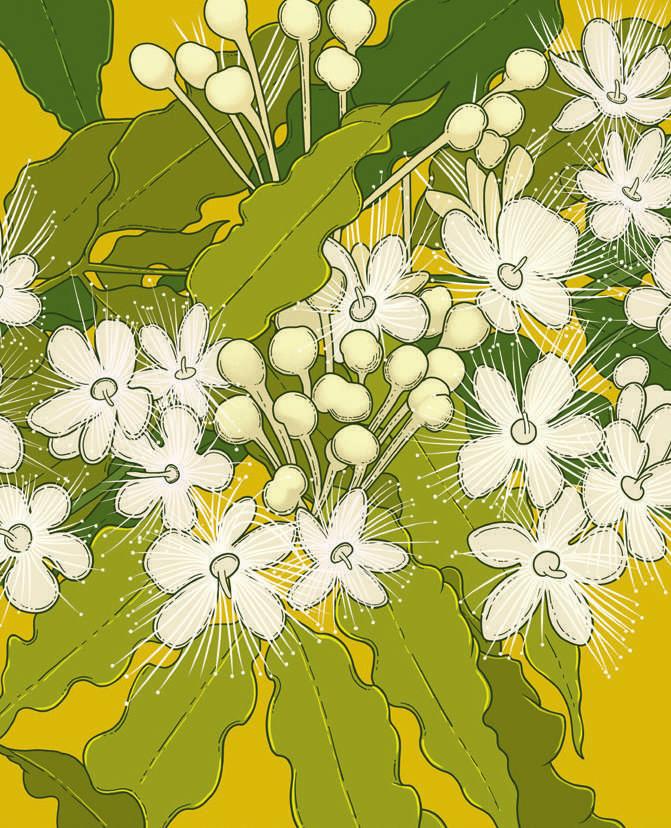
2 minute read
Broad-leaved Paperbark
~ Melaleuca quinquenervia ~
MYRTACEAE
Advertisement
These honey-fragrant trees are a dominant species throughout the coastal areas surrounding my home within the Moreton Bay region. Given their large numbers and long flowering seasons of buxom, nectarfilled blossoms, they provide a significant food source for creatures of the night, such as the Grey-headed Flying-fox (Pteropus poliocephalus) and the Little Red Flying-fox (Pteropus scapulatus), and a place to nest and roost for the Night Heron (Nycticorax caledonicus). These spongy-barked Melaleucas also provide habitat for native epiphytic plants and Orchids as well as nectar and pollen for our native Scaly-breasted Lorikeet (Trichoglossus chlorolepidotus) and the precious Scarlet Honeyeater (Myzomela sanguinolenta). The Paperbark is also a devout fire-lover, flowering prolifically within weeks of being burnt.
WHERE TO LOOK
These east-coast residents enjoy dipping their roots in swampy, silty soils throughout coastal heaths from Botany Bay in New South Wales to Cape York Peninsula in Far North Queensland. It can also be found in dry plains and along estuary margins. The Paperbark will be seen in the company of our usual sandy suspects like the Coastal Banksia.
Locations → Queensland: Rainbow Beach, Mooloolah River National Park, Ningi and Bribie Island; NSW: Yuraygir National Park and Ku-ring-gai Wildflower Garden in St Ives.
FEATURES
The Paperbark grows to a broad tree standing 8–20m tall with a crown of wide grey-green leathery leaves 70mm long. Its signature look is its papery trunk made up of many thin layers of corky, spongy bark that are torn and ragged on its external layers. Its cream inflorescences are bottle-brush in appearance and made up of small florets densely packed along a 2–5cm flower spike – there can be between 15 and 50 florets per flower. Its fruit are short cylindrical woody capsules 2.5–4mm borne directly on the branches and containing many tiny seeds. The fruit will stay on the tree and release their seed annually.
FLOWERING SEASON
Spring to early autumn → You can find these trees in bloom around September to March.
TRADITIONAL USES
The bark of the Melaleuca quinquenervia has been used extensively by First Nation communities as a lining for baskets and ground ovens, for making coolamons and as wraps for baked foods. The leaves have been crushed into water and consumed to relieve headaches and colds and the flowers washed in water to create a nectar-rich beverage.
PLANTING
This tree is easily grown from seed or cutting and is suitable for almost any soil type. It doesn’t mind getting boggy. Plants are widely available. Keep in mind they will grow to around 12m in cultivation.










